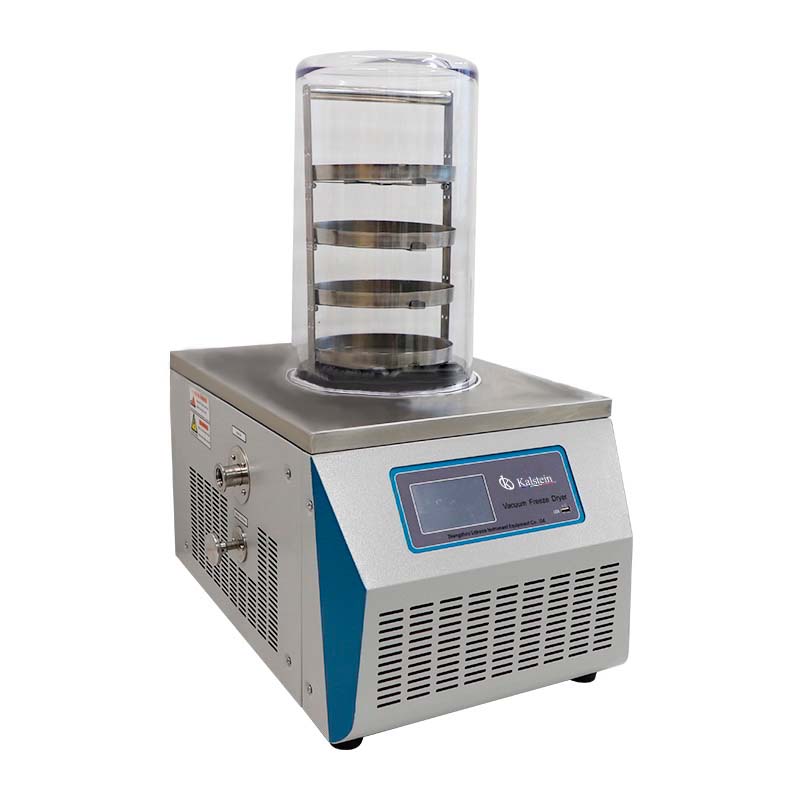The lyophilizer is a laboratory instrument that is used to carry out lyophilization, that is, to remove the moisture present in a given product through cold drying, because lyophilization is a process that aims to separate water ( or other solvent) of a solution by freezing and subsequent sublimation of ice under reduced pressure. This technique is used to stabilize materials of a biological nature composed mainly of water.
A lyophilizer is made up of the following parts: dry chamber or lyophilization chamber: it is the place where the substance to be lyophilized is placed, condenser with a refrigeration circuit: it communicates with the dry chamber and it is where the vapor that is produced in the sublimation and finally a vacuum system.
Freeze dryers currently fall into two broad categories: those that operate in batches and those that operate continuously.
Routine applications of a freeze dryer
At the laboratory level, for small amounts of sample, vials, tubes or round bottom flasks are used (greater resistance, with the possibility of closing inside the lyophilizer). At an industrial level, trays are used for large amounts of material to be freeze-dried. The procedure to lyophilize the sample consists of several stages: freezing of the sample at low temperatures, drying of the frozen product by sublimation and storage of the product. Among the main applications of a freeze dryer we find:
- Conservation of the characteristics of the original substances.
- Conservation of the original shape.
- Material conditioning.
- Preparation of samples for chemical or biochemical analysis.
How does freeze drying work?
Lyophilization is the mildest process for drying products and is the best method for drying organic or inorganic compounds without altering their qualitative or quantitative composition. The lyophilization process is carried out under vacuum and at low temperature and thus, for example, it is possible to avoid protein denaturation. Food and biological materials such as cells, tissues, bacteria and vaccines become dry products, avoiding passage through their liquid phase, and consequently enzymatic, biological and chemical changes.
Benefits of freeze-drying compared to other techniques
- Products are obtained that can be regenerated very quickly.
- The shape and characteristics of the final product are essentially original.
- It is an ideal process for drying thermolabile substances.
- Oxidizable constituents are protected.
- The final moisture content is very low.
What do we offer you at Kalstein?
At Kalstein we are manufacturers of laboratory equipment that have the best designs and the best technology, so this time we present our normal tabletop laboratory freeze dryer YR05186, a new equipment that has the following characteristics:
- Transparent plexiglass hood to observe the drying effect. With 4 stainless steel trays.
- LCD touch screen, can display the temperature and degree of vacuum, with drying curve. With USB interface, you can download historical data.
- Cold trap for pre-freezing, with frames for pre-freezing, without the need to buy a new freezer.
- Vacuum pump included, high pumping speed. Kalstein
For more information about our freeze dryers, we invite you to take a look at our product catalog HERE


